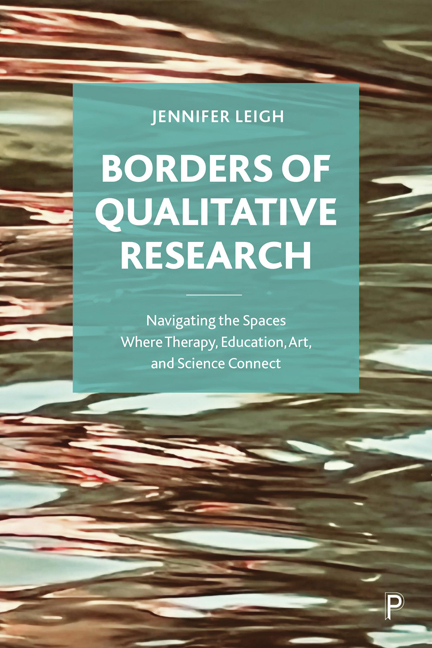 Borders of Qualitative Research
Borders of Qualitative Research Case Study 1 - Working with children
Published online by Cambridge University Press: 28 March 2024
Summary
I have already drawn on my doctoral research in this book, and am using this case study to illustrate how qualitative research can border onto education and therapy. This study took place over two years in a school setting. It comprised group somatics sessions timetabled to be part of the school day. The study was primarily movement based and used a range of arts-based creative methods designed to support children aged four to 11 to develop their embodied self-awareness, learn to reflect, and capture that process. This case study highlights the importance of intention to differentiate between educational and therapeutic content, and how therapeutic outcomes can be gained from research set within an educational setting.
Context
My doctoral research involved 26 children aged from four to 11 years old (Reception to Year 6) in a school setting over two years (Leigh 2012). The publications from this work have included the use of creative methods and journaling to facilitate children to develop a reflective practice (Leigh 2020a); children’s experiences, perceptions, and self-regulation of emotion (Leigh 2017); and the connection between reflection, reflective practice, and embodied reflective practice (Leigh and Bailey 2013). I had worked with children in schools from early in the 2000s, offering after-school clubs in yoga at my children’s primary school and others nearby. Teaching yoga and movement to children is different from working with adults – there are three rules to consider, which can be summarised in just three points:
1. children are not mini adults;
2. children are not mini adults;
3. children are not mini adults. (Bailey 2012: 21)
As well as traditional animal-based movements that appeal to children (Mainland 1998), I found that, depending on age, they also enjoyed faster vinayasa type sequences (Devereux 1998), and balances that related to developmental righting reactions (Brook n.d.; Hartley 1989). Introducing developmental movements such as hopping like a frog or rabbit (there is a difference – try it!), walking like a bear, or making shapes like a chameleon stuck to a wall were all firm favourites. I had also worked with autistic children, children with cerebral palsy, and physical and intellectual developmental delay.
- Type
- Chapter
- Information
- Borders of Qualitative ResearchNavigating the Spaces Where Therapy, Education, Art, and Science Connect, pp. 139 - 156Publisher: Bristol University PressPrint publication year: 2023


